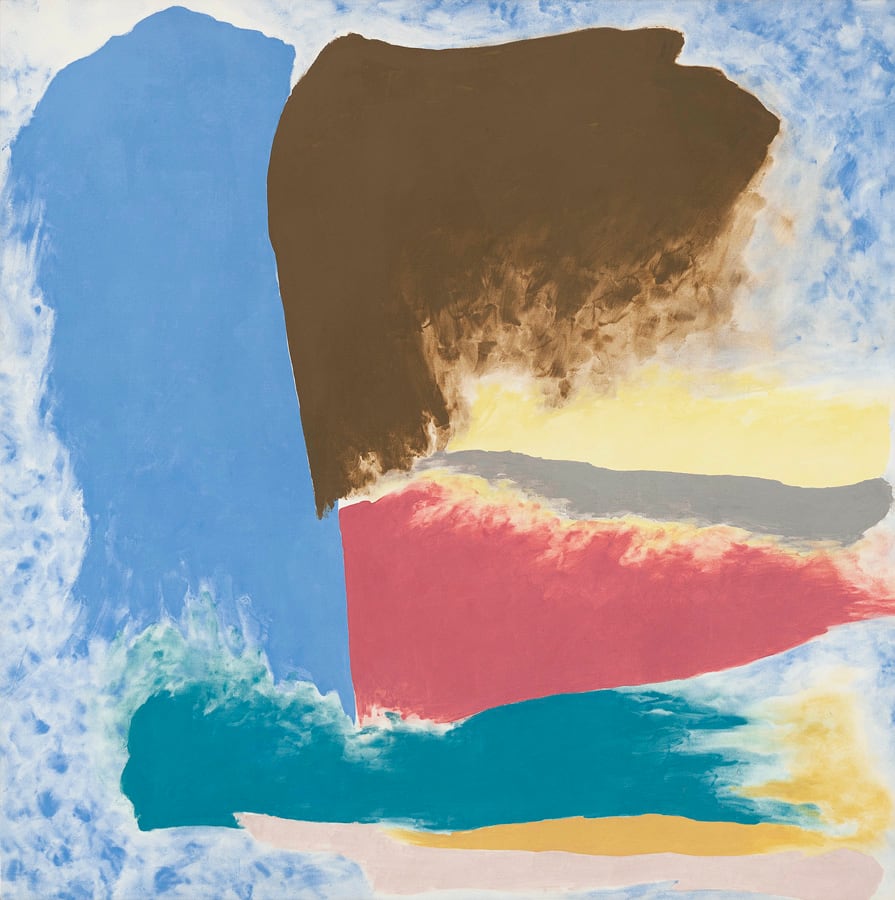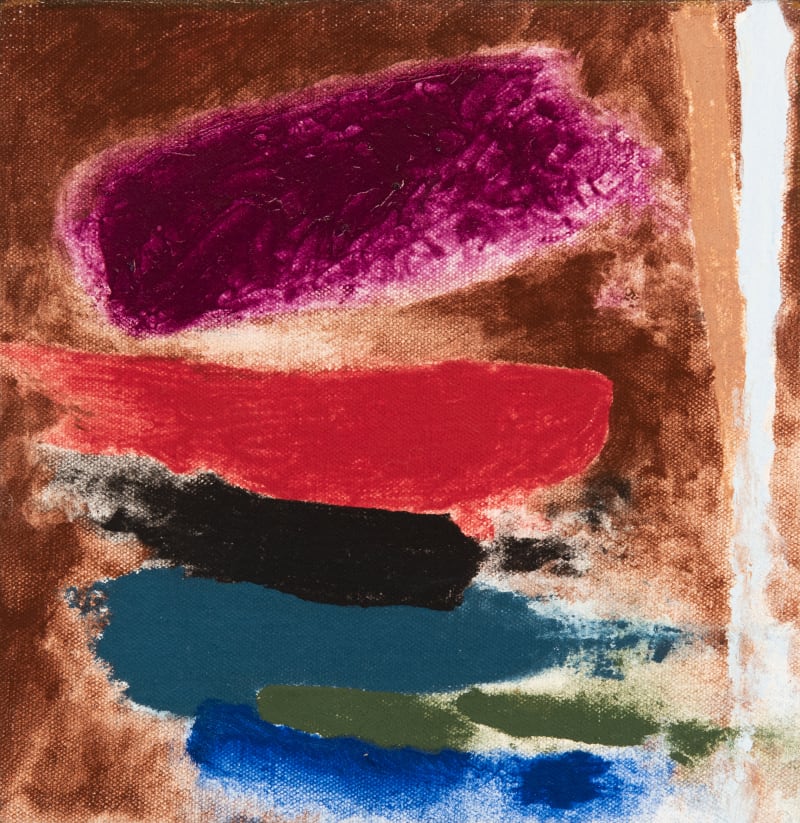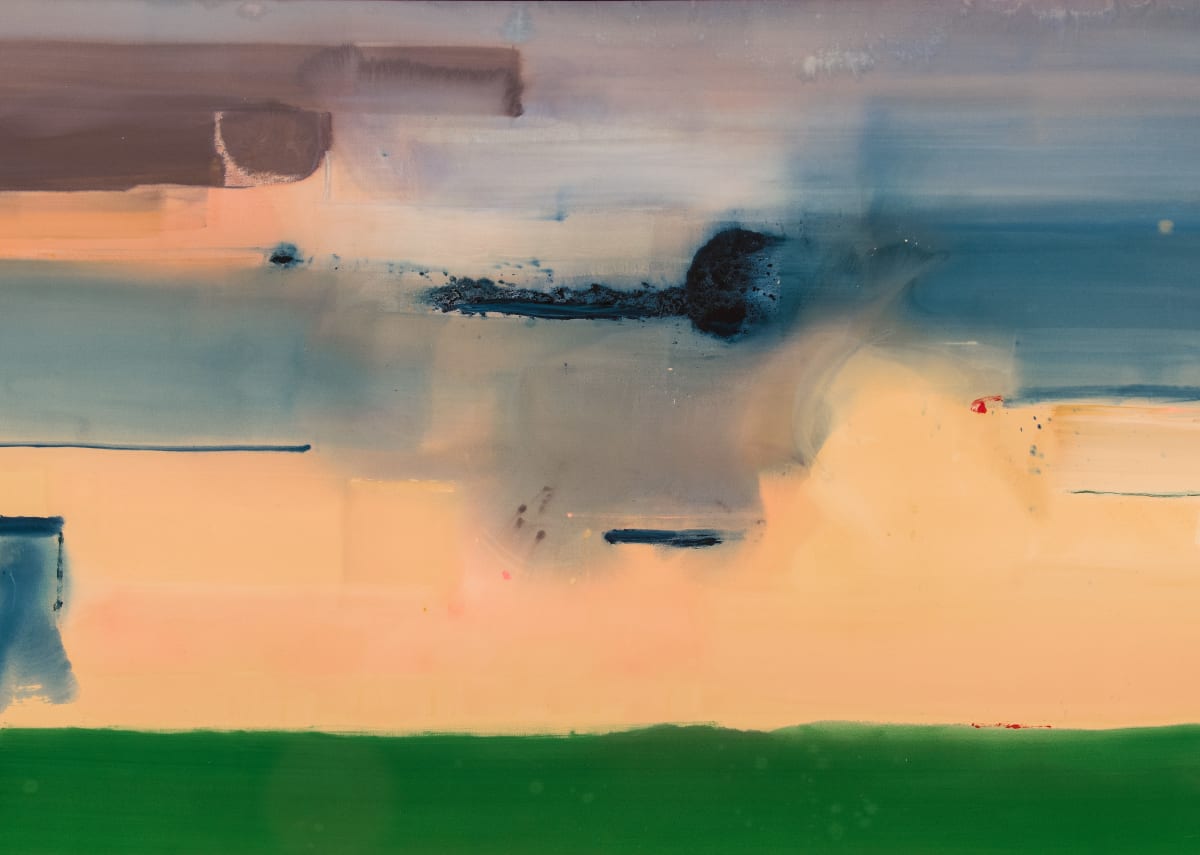
Dzubas was integral to the development of the stain painting technique for which Frankenthaler, Morris Louis, and Kenneth Noland became renowned
A color-field painter associated with the Abstract Expressionist circle, including Jackson Pollock, Clement Greenberg, and Helen Frankenthaler, Dzubas was integral to the development of the stain painting technique for which Frankenthaler, Morris Louis, and Kenneth Noland became renowned. Born in 1915 in Berlin, Dzubas attended Königstadtische Obrealschule, where his drawing teacher cultivated his interest in art. He also viewed the collection of modern art at the Nationalgalerie and especially liked the work of Eduard Munch and Vincent van Gogh. In 1939 Dzubas, who was working for a Berlin painting company, fled Nazi Germany and settled in New York, where he was employed as a busboy, deliveryman, and house painter. Something of a wanderer, Dzubas’ life would be characterized by frequent moves. In 1940, he went to Chicago to work as a designer, returning to New York in 1945 after another short stint as an advertising art director in Ohio.
A color-field painter associated with the Abstract Expressionist circle, including Jackson Pollock, Clement Greenberg, and Helen Frankenthaler, Dzubas was integral to the development of the stain painting technique for which Frankenthaler, Morris Louis, and Kenneth Noland became renowned. Born in 1915 in Berlin, Dzubas attended Königstadtische Obrealschule, where his drawing teacher cultivated his interest in art. He also viewed the collection of modern art at the Nationalgalerie and especially liked the work of Eduard Munch and Vincent van Gogh. In 1939 Dzubas, who was working for a Berlin painting company, fled Nazi Germany and settled in New York, where he was employed as a busboy, deliveryman, and house painter. Something of a wanderer, Dzubas’ life would be characterized by frequent moves. In 1940, he went to Chicago to work as a designer, returning to New York in 1945 after another short stint as an advertising art director in Ohio.
Living on West Tenth Street, Dzubas worked as a book designer and became involved in avant-garde artistic and literary circles. In 1948 he met Clement Greenberg who introduced him to Jackson Pollock and Katherine Dreier. That same year he participated in his first group exhibition at Weyhe Gallery. The following year he became a member of the Eight Street Club, an Abstract Expressionist group that included Willem de Kooning, Franz Kline, and Ad Reinhardt among others. While Dzubas’ early paintings evoked Paul Klee and the Surrealist works of William Baziotes, by 1949 he was experimenting with soaking paint into sheets of canvas.
In 1951 Greenberg introduced Dzubas to Helen Frankenthaler, with whom he would share a studio space the following year. In 1952 he received his first solo exhibition at Tibor de Nagy, which was positively received. Dzubas did not create his next major series until 1960, when he began working on large canvases in a black and white calligraphic style. In 1963 he reincorporated color into his compositions employing softer, deeper, hues from mustard to rouge and placing these forms within expanses of white canvas. Around 1968 Dzubas began employing an extreme horizontal format, with canvases several inches high and as much as twenty feet long.
Throughout the sixties and seventies Dzubas was honored with several prestigious teaching appointments and grants, including two Guggenheim fellowships, a National Endowment for the Arts Painting Fellowship, and Artist-in-Residence appointments at the Institute for Humanistic Studies in Aspen, Dartmouth College, and Cornell University. He moved to Ithaca, New York in 1969 and would continue to teach at Cornell intermittently through 1974. That same year he had his first museum exhibition at Museum of Fine Arts, Houston and received a retrospective exhibition from the Hirshhorn Museum and Sculpture Garden, Washington, D.C in 1983. From 1976 to 1993 he taught at the School of the Museum of Fine Arts, Boston. Dzubas died in Auburndale, Massachusetts on December 10, 1994.
Works
News

















